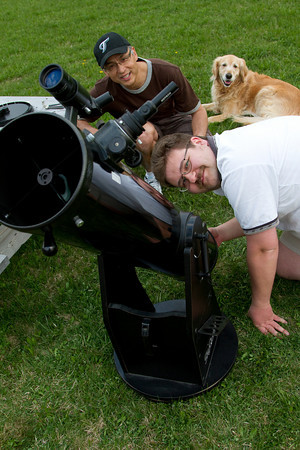
Here are some rules of thumb to help you decide what telescope to get:
- The amount of light gathering capability (aperture, measured in inches or millimeters) determines most of a telescope’s performance. For visual astronomy it is often recommended to get the largest aperture you are willing to carry around, store and pay for.
- Computers to help you point the telescope are handy but also require you to learn more about how to operate the telescope. Often it can be a good choice to invest in optics instead of computerization.
- Unfortunately, most telescopes from big box stores have poor optical quality and should be avoided. Colourful boxes boasting high magnifications usually indicate a less than mediocre telescope.
- Before buying a telescope, come to a star party and look through different telescopes. We love to show the universe. Looking through telescopes at night will give you a good idea how different telescopes work and perform. The RASC organizes star parties almost every week.
- Test-drive a telescope. If you are a RASC member, you can borrow telescopes at no additional fees.
Here are some internet resources to get started with finding the right telescope:
- A Sky & Telescope article about different telescopes.
- An article on beginner telescopes by Alan Dyer and Terence Dickinson.
- Sketches made while looking through telescopes give you a realistic idea what you can expect to see.
- Instead of a telescope, you could also consider binoculars.
Making your own telescope is also an option. With some time and dedication, amazing instruments can be built. Our telescope making members are happy to help you start making a telescope.

